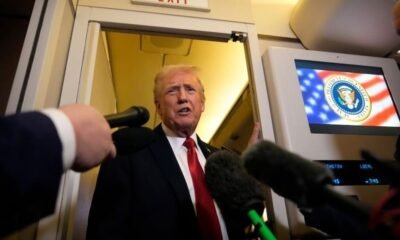INTERNACIONAL
Reformistas vs. conservadores: quiénes son los candidatos con más posibilidades de suceder a Francisco

El cónclave del que saldrá el sucesor de Francisco, fallecido el lunes a los 88 años, será el más concurrido y universal de la historia. Un total de 135 cardenales, menores de 80 años y con derecho a voto, elegirá al nuevo jefe de la Iglesia católica.
Si bien cada uno de ellos -incluso los cuatro argentinos que forman parte del cuerpo cardenalicio- están en condiciones de ser elegidos, solo un puñado de purpurados es considerado “papable”. Según expertos vaticanistas, se vislumbra una dura interna dentro de la Capilla Sixtina entre el ala reformista, que promueve una continuidad del legado de Jorge Bergoglio, y el sector conservador, el robusto cuerpo opositor al pontificado de Francisco que impulsa un drástico cambio de timón en el Vaticano.
Leé también: Una tumba sencilla y una lápida con su nombre: las instrucciones que dejó Francisco para su funeral
Los bandos están bien definidos. Por el grupo reformista los favoritos son el arzobispo de Bolonia y titular de la Conferencia Episcopal italiana Matteo Zuppi; el filipino Luis Antonio Tagle, prefecto de la Congregación para la Evangelización de los Pueblos y el ghanés Peter Kodwo Appiah Turkson, actual canciller de la Pontificia Academia de las Ciencias y de la Pontificia Academia de Ciencias Sociales. En este último caso, hay una creciente expectativa porque, de ser elegido, se convertiría en el primer “papa africano”, un hito revolucionario en la historia de la Iglesia. El cardenal ghanés Peter Turkson (Foto: Reuters//Guglielmo Mangiapane)
En frente, se encoluman los conservadores liderados por el estadounidense Raymond Leo Burke, del ala más radical y uno de los grandes “enemigos” de Francisco, secundados por el neerlandés Willem Eijk, arzobispo de Utrecht y el húngaro Peter Erdo, titular de la Conferencia Episcopal Húngara y del Concilio de Conferencias Episcopales de Europa. También hay otros “papables” tradicionalistas de origen africano.
Hacia dónde se inclina el cuerpo cardenalicio
La Iglesia que dejó Francisco no es la misma que la que recibió cuando asumió su pontificado en 2013. Hoy el cuerpo cardenalicio representa a todos los continentes. Europa, si bien sigue teniendo un enorme peso, ya no monopoliza el debate.
En sus doce años de pontificado, Bergoglio nombró a 110 de los 135 cardenales con derecho a voto. Hay otros 117 purpurados mayores de 80 años que no sufragan por haber traspasado esa línea etaria. Hoy hay cardenales de países pequeños y lejanos como Timor Oriental, Mongolia, Lesoto o Tonga.

Los cardenales son los encargados de designar a los papas (Foto de archivo: EFE)
Hay veintitrés latinoamericanos, entre ellos cuatro argentinos: Víctor “Tucho” Fernández, Vicente Bokalic Iglic, Ángel Sixto Rossi y Mario Poli. Pero a priori ninguno de ellos es considerado “papable”. Que la Iglesia católica tenga dos papas argentinos consecutivos sería un milagro más difícil de materializarse que el que llevó a Jorge Bergoglio al trono de Pedro.
El grupo latinoamericano tendrá también su peso, con una fuerte presencia brasileña con siete cardenales, aunque en total conforma menos de la mitad del bloque europeo (veintitrés contra cincuenta y cinco, de ellos dieciocho italianos, que durante siglos dominaron los sucesivos cónclaves). Asia cuenta hoy con veinticinco purpurados y África también con dieciocho. El resto proviene de Norteamérica y Oceanía.
Leé también: Los líderes mundiales despidieron al papa Francisco y destacaron su “legado profundo”
Pero esta universalidad no garantiza homogeneidad.
Francisco no se preocupó (ni se ocupó) por elegir cardenales afines a su pensamiento reformista. Pero hizo lío. Su objetivo fue dar cabida a todos, incorporando a la periferia al núcleo central e histórico. De hecho, muchas de las iglesias africanas con representación en el cónclave son tradicionalmente conservadoras. Por eso el voto es hoy una incógnita. Dependerá de cuán “trabada” esté la elección, de los acuerdos bajo la mesa o de eventuales renunciamientos (como el del propio Bergoglio en el cónclave que eligió a Benedicto XVI) para encausarla. Pero también del surgimiento de una figura moderada (un sector clave) que actúe de puente entre ambos bandos, como la del actual “canciller” vaticano, Pietro Parolín, considerado un negociador sobrio y prudente por su vasta experiencia diplomática. Al secretario de Estado, de hecho, se lo menciona como uno de los posibles candidatos en caso de que se “trabe” la votación y surja una figura de consenso.
Quién es quién entre los “papables”
Son muchas las figuras papables. Incluso nadie se anima a descartar un “tapado”. Pero hay un grupo de seis cardenales que se llevan todas las miradas por su peso e influencia en otros purpurados. Tres reformistas y tres conservadores.
ALA REFORMISTA:
- Matteo Zuppi, arzobispo de Bolonia y titular de la Conferencia Episcopal italiana. A los 69 años es el gran favorito entre los progresistas. Muy cercano al pensamiento de Francisco y a la Comunidad Sant’Egidio, conocida por su compromiso por los más pobres, pica en punta en el favoritismo de los vaticanistas. Muchos expertos sostienen que es hora de que un italiano vuelva a comandar el destino de la Iglesia. Si bien Bergoglio tenía raíces en la península, el último papa italiano fue Juan Pablo I, que tuvo un brevísimo pontificado de 33 días en 1978.

El cardenal italiano Matteo Zuppi (Foto: Reuters/Gugliemo Mangiapane)
- Luis Antonio Tagle, prefecto de la Congregación para la Evangelización de los Pueblos. Otro de los grandes reformistas aliados de Francisco. A los 67 años, el cardenal filipino es el más joven de todos los “candidatos”. Su curriculum es extenso: fue arzobispo de Manila y, desde 2019, comanda la Congregación para la Evangelización de los Pueblos. Su enfoque pastoral está basado en la misericordia, la inclusión y la justicia social.

El cardenal filipino Luis Antonio Tagle (Foto:(AP/Andrew Medichini, Archivo)
- Peter Kodwo Appiah Turkson, actual canciller de la Pontificia Academia de las Ciencias y de la Pontificia Academia de Ciencias Sociales. El purpurado ghanés, de 76 años, se lleva todas las miradas. No solo por su perfil progresista, sino porque podría convertirse en el primer papa africano de la historia de la Iglesia católica. Su elección sería mucho más simbólica y disruptiva que la de Bergoglio, el papa del “fin del mundo”. Nació en una familia modesta de 10 hijos, habla seis idiomas y es reconocido por ser habitué del Foro Económico Mundial de Davos. ¿A qué va? A alertar a los líderes empresariales de los peligros de la economía.

El cardenal ghanés Peter Turkson (Foto: Reuters/Guglielmo Mangiapane)
Otros “papables” progresistas son el francés Jean-Marc Aveline, de 66 años y arzobispo de Marsella; Jean Claude Hollerich, de la misma edad y arzobispo de Luxemburgo; el cardenal italiano Pierbattista Pizzaballa, de 59 años, Patriarca Latino de Jerusalén, y el estadounidense Robert Prevost, Prefecto del Dicasterio para los Obispos y arzobispo emérito de Chiclayo, Perú, entre otros.
ALA CONSERVADORA
- Raymond Leo Burke, uno de los grandes “enemigos” de Francisco. El cardenal estadounidense, de 76 años, es el líder de la línea ultraconservadora de la Iglesia y muy cercano a Donald Trump. Fue, de hecho, el gran opositor al progresismo de Francisco. Incluso, los aliados del fallecido papa lo han señalado más de una vez por conspirar contra Bergoglio. Fue un duro crítico sobre la apertura del Vaticano a los homosexuales impulsada por el papa argentino. Defiende la tradición litúrgica, incluyendo la misa en latín, y se opone a la comunión para divorciados vueltos a casar y la inclusión de personas LGBTQ+ en la Iglesia. Si bien no es de los grandes favoritos para ser ungido papa, puede representar un rol de operador clave durante el cónclave.

Francisco y el cardenal estadounidense Raymond Leo Burke (Foto: vía Reuters)
- Willem Eijk, arzobispo de Utrecht, Países Bajos. El purpurado neerlandés, de 71 años, es otro de los grandes candidatos conservadores. Estuvo en desacuerdo con muchas de las decisiones de Francisco en los últimos años, en sintonía con Burke. Se lo vincula con la línea conservadora heredera del fallecido Benedicto XVI.

El cardenal neerlandés Willem Eijk (Foto: cortesía Infocatólica).
- Peter Erdo, titular de la Conferencia Episcopal Húngara y del Concilio de Conferencias Episcopales de Europa. Es el tercer papable con más proyección entre el grupo tradicionalista. A los 71 años, se lo reconoce por su capacidad de diálogo. De hecho, en los últimos años logró un acercamiento entre Francisco y el ultraderechista presidente húngaro, Viktor Orban.

ARCHIVO – El cardenal húngaro Peter Erdo (AP Foto/Denes Erdos, Archivo)
Otros “papables” conservadores son el estadounidense Timothy Dolan, de 75 años, arzobispo de Nueva York; el brasileño Odilio Pedro Scherer, de 76 años, arzobispo de San Pablo, y dos africanos: el guineano Robert Sarah, de 79 años, prefecto Emérito de la Congregación para el Culto Divino y la Disciplina de los Sacramentos, y el congoleño Fridolin Ambongo, arzobispo metropolitano de Kinshasa.
Si bien no hay una fecha definida para el cónclave, se espera que su comienzo demore al menos dos semanas, posiblemente después del 5 de mayo.
Papa Francisco, Vaticano
INTERNACIONAL
M. Night Shyamalan sorprende con una película de amor: “Quería hacer algo diferente”
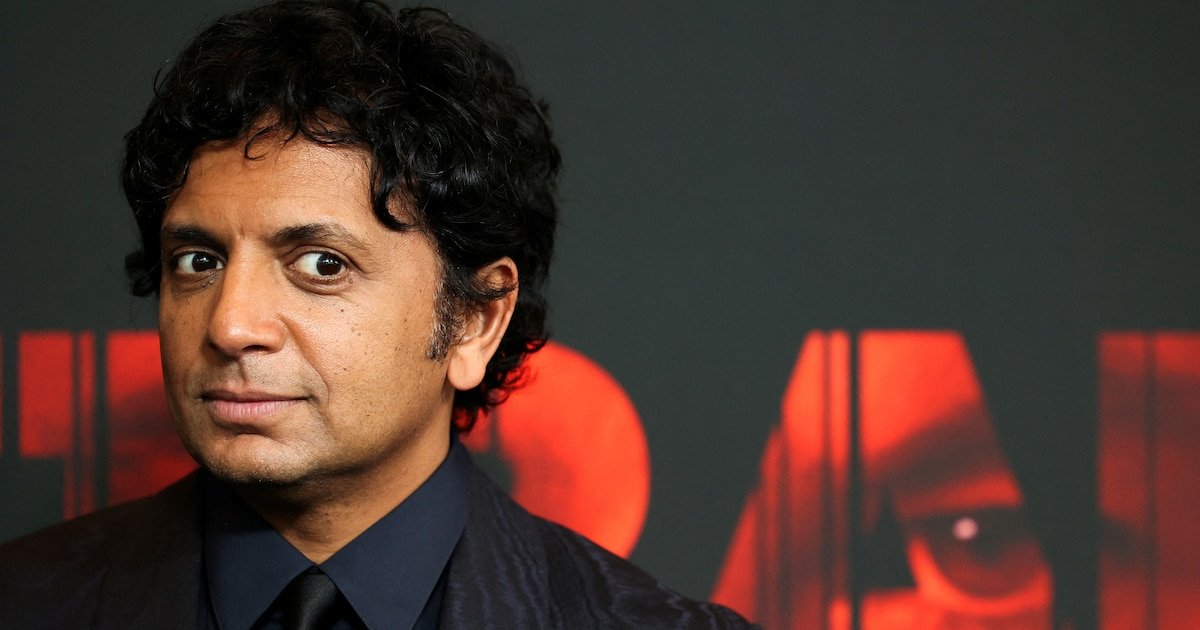
Incluso M. Night Shyamalan —conocido por hacer películas más oscuras como Sexto sentido y Señales”— a veces busca la luz. “Acabo de terminar tres películas realmente oscuras, Viejos, Llaman a la puerta y Trampa, que son historias muy intensas donde los personajes son súper, súper oscuros y complicados, y quería hacer algo diferente”, dijo el director.
Encontró una oportunidad interesante para colaborar en una nueva novela de romance sobrenatural llamada Remain junto a Nicholas Sparks. Sí, ese Nicholas Sparks: el rey de los dramas románticos como Diario de una pasión y Un paseo para recordar.
Los libros coescritos son una tendencia candente en el mundo editorial en este momento. Reese Witherspoon y Harlan Coben tienen una nueva novela. James Patterson se ha asociado con Bill Clinton y Dolly Parton en libros. Sin embargo, esta colaboración es diferente en que Shyamalan escribió el guion y Sparks aceptó escribir una novela basada en esa historia. Una película de Remain —protagonizada por Jake Gyllenhaal y Phoebe Dynevor— ya terminó su producción y se estrenará el próximo año.

“No creo que nadie haya hecho lo que acabamos de hacer, que fue tomar la misma historia e ir simultáneamente a hacer nuestras cosas por separado”, dijo Sparks. “No es de manera lineal. Son dos personas haciendo dos formas de arte diferentes a partir de la misma historia. Confié en él al 100% para hacer la mejor versión cinematográfica posible de esa historia y él confió en mí”.
Ambos se cruzaron hace años cuando le preguntaron a Shyamalan si querría adaptar la novela de Sparks El diario de una pasión en una película. El trabajo terminó en manos de Nick Cassavetes, pero Shyamalan dijo que la obra de Sparks “siempre representó algo mágico para mí”. Significaba algo para él que le confiaran una historia tan querida.
En una entrevista conjunta, Nicholas Sparks y M. Night Shyamalan hablan sobre trabajar juntos, películas de terror y ensalada de pollo. Las respuestas han sido editadas por claridad y brevedad.

—Al principio, ustedes dos trabajando juntos parece una pareja poco probable, pero los géneros sobrenatural y romántico tienen mucho en común.
SPARKS: No somos los primeros en incursionar en esto. La película más grande de 1990 fue Ghost. Shakespeare solía poner fantasmas en sus obras.
SHYAMALAN: Creo que el amor es un concepto sobrenatural. Es una mitología en la que todos creemos, pero sigue siendo una mitología, una mitología sobrenatural de que existe “el indicado”. El “destinado” que conoces en la cafetería y sabes que estaba destinado a ser, y luego todas las cosas que suceden porque se conocieron.
—Night, dices que te acercaste a Gyllenhaal a principios de año para este papel. Cuando lo hiciste, ¿le dijiste que también habría una novela escrita por Sparks?
SHYAMALAN: Debo haberlo hecho. Pero fue un momento tan inusual porque había terminado de escribir el guion, presioné guardar, corrí para subirme al auto e ir a Nueva York para el cumpleaños de mi hija. En el auto suena el teléfono, y es Jake. Y yo, “¿Qué pasa, amigo?” No habíamos hablado en cinco años, o más. Y él dice, “Me encantaría estar en una de tus películas”. Y yo respondí, “Eso es tan raro. ¿Dónde estás?” Y él, “Estoy en Nueva York”. Le dije, “Bueno, yo voy a Nueva York. ¿Quieres tomar un té?”
Tuve la corazonada de que el universo estaba haciendo algo. Así que llamé a mi asistente. Le dije, “Imprime el guion”. Así que solo estábamos tomando té y poniéndonos al día. Y él me contaba lo enamorado que está y lo feliz que está y enamorado. Y le dije, “¿Sabes qué? Toma”. Se quedó en shock. Me llamó dos días después y dijo, “Estoy dentro. Me encanta”. Fue una especie de cosa extraña y hermosa.

—¿El libro sigue el guion al pie de la letra o viceversa?
SPARKS: Como cualquier adaptación, no. Lo primero que dije cuando leí su guion fue, “Oye, esto es genial. Por supuesto, no se parecerá en nada a mi novela. Es completamente diferente”. Night dijo básicamente lo mismo.
SHYAMALAN: Creo que para el público será muy interesante. Podrán señalar las diferencias y preguntar, “¿Por qué Nicholas hizo eso con el personaje y la historia de fondo? ¿Por qué Night hizo esto?” Nuestro diálogo no es el mismo.
—Night, estamos en temporada de Halloween. ¿Hay alguna película —además de las tuyas— que recomiendes ver?
SHYAMALAN: El exorcista, por supuesto, siempre está ahí. Está Juego de inocentes. La casa embrujada, la película de 1963 de Robert Wise. Y la película japonesa Cure.
Fuente: AP
INTERNACIONAL
Australian prime minister’s plane makes emergency landing in St Louis after leaving Washington
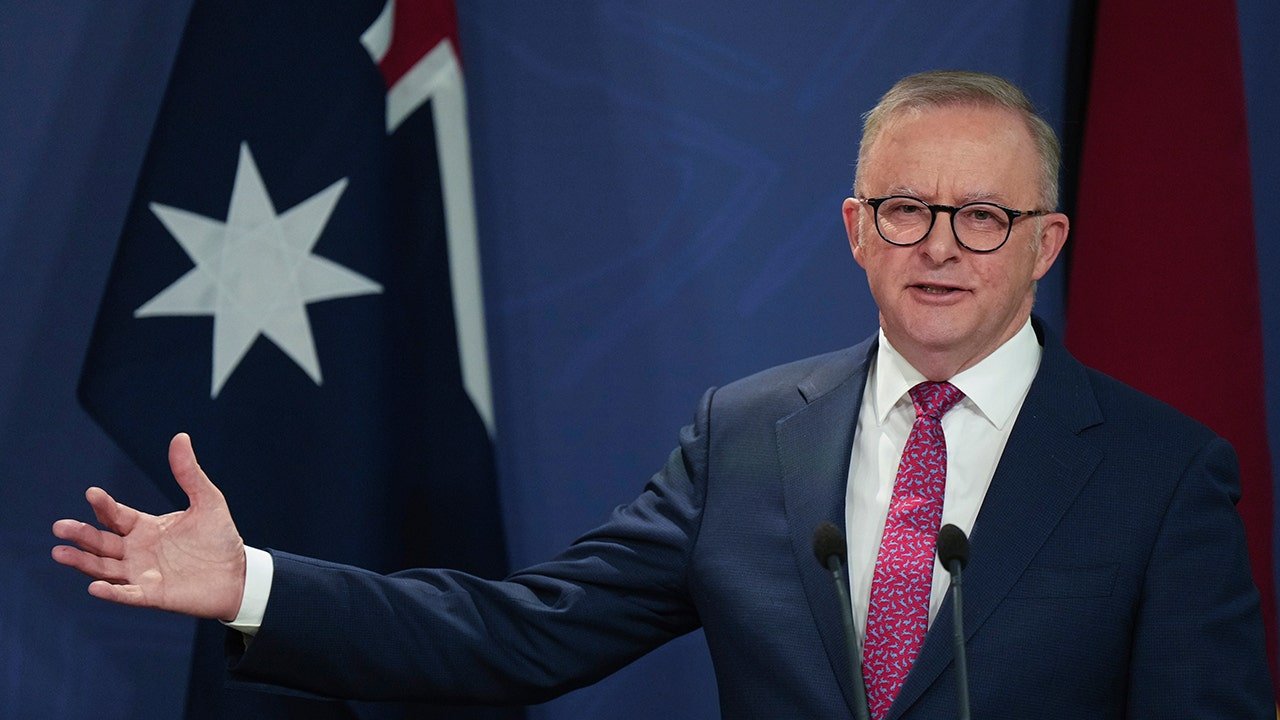
NEWYou can now listen to Fox News articles!
The plane carrying Australian Prime Minister Anthony Albanese had to make an emergency landing Tuesday night after leaving Washington, D.C.
The aircraft, a Royal Australian Air Force KC-30A, diverted and landed safely at the St. Louis Lambert International Airport in Missouri, an Australian Defence spokesperson confirmed to Fox News.
«Our highest priority is providing support to the injured member and request that their privacy be respected,» a statement said.
Officials told local FOX 2 that a crew member was struck in the head by luggage, and it was believed to have fallen from an overhead bin.
TRUMP THREATENS ‘MASSIVE’ CHINA TARIFFS, SEES ‘NO REASON’ TO MEET WITH XI
President Donald Trump, right, shakes the hand of Australian Prime Minister Anthony Albanese during a meeting in the Cabinet Room of the White House, Monday, October 20, 2025, in Washington, D.C. (Evan Vucci)
That crew member reportedly suffered a concussion and was taken to the hospital.
Albanese’s plane had left Joint Base Andrews at 5:15 p.m., FOX 2 reported, and the emergency landing happened around 7:45 p.m.
President Donald Trump and Albanese signed a critical minerals deal at the White House on Monday as the U.S. had been eyeing the continent’s rich rare-earth resources. This, at a time when China is imposing tougher rules on exporting its own critical minerals abroad.
TRUMP ADMIN SLAMS CHINA’S ‘GLOBAL POWER GRAB’ ON RARE EARTHS, THREATENS TRIPLE-DIGIT TARIFFS
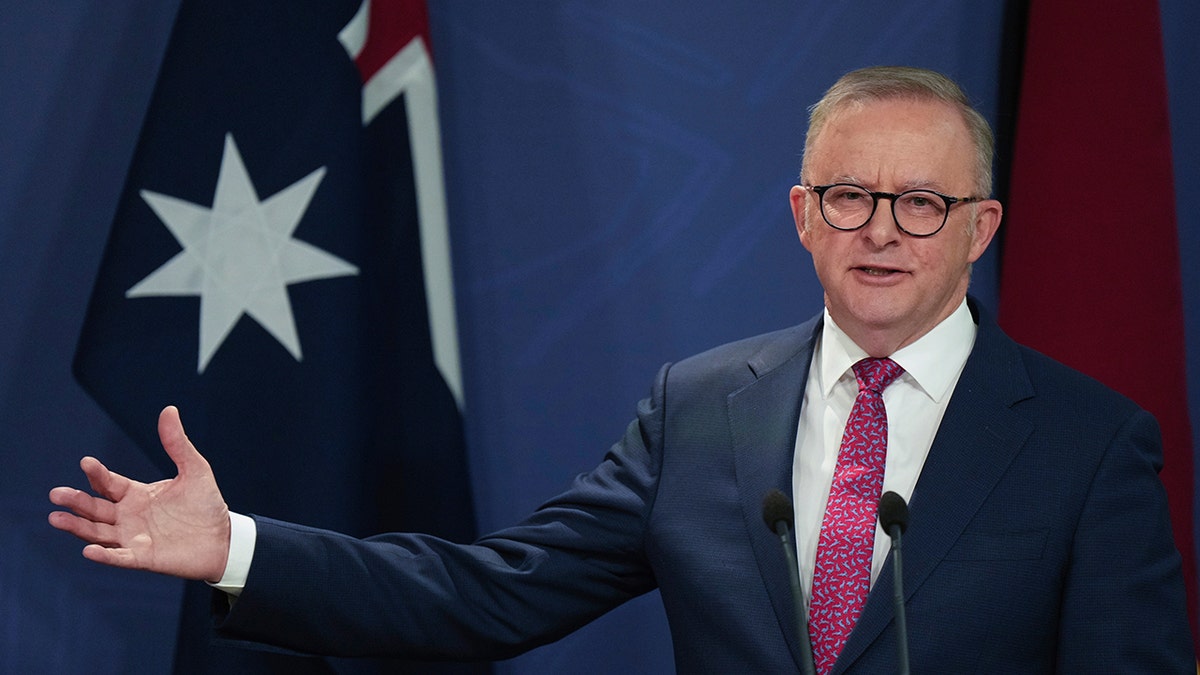
Australian Prime Minister Anthony Albanese gestures during a press conference in Sydney, Australia, Dec. 12, 2024. (Mark Baker, File)
The two leaders described the agreement as an $8.5 billion deal between the allies. Trump said it had been negotiated over several months.
«In about a year from now we’ll have so much critical mineral and rare earth that you won’t know what to do with them,» said Trump, boasting about the deal. «They’ll be worth $2.»
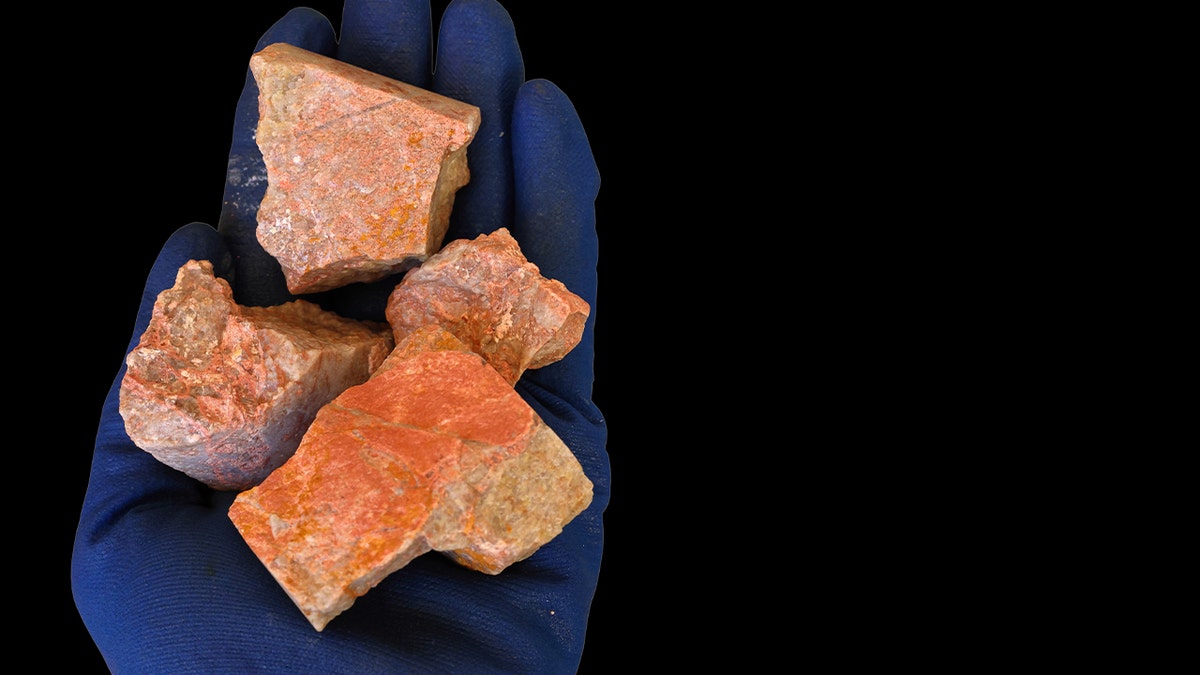
Xenotime is a rare earth element that can be found in Australia. (Getty Images )
CLICK HERE TO DOWNLOAD THE FOX NEWS APP
Albanese added that the agreement takes the U.S.-Australia relationship «to the next level.»
The Associated Press contributed to this report.
st louis,australia,politics,washington dc,foreign affairs,white house,missouri
INTERNACIONAL
Rodeado de enemigos y criminales, Nicolás Sarkozy lleva a prisión a sus custodios presidenciales

Un presidente amenazado por islamistas
Sin teléfonos celulares
Se descartó a las fuerzas especiales
Los guardias carcelarios furiosos
Piden su libertad

 CHIMENTOS3 días ago
CHIMENTOS3 días agoLa cruda confesión del Turco Naim a 1 año de la separación de Emilia Attias: «Me di cuenta que hay que aprender a estar solo»

 CHIMENTOS2 días ago
CHIMENTOS2 días agoPampita recibió un video inesperado de su hija Blanca en el Día de la Madre y no pudo contener la emoción

 POLITICA2 días ago
POLITICA2 días agoDonald Trump habló sobre la ayuda económica de Estados Unidos: “La Argentina está peleando por su vida”


























